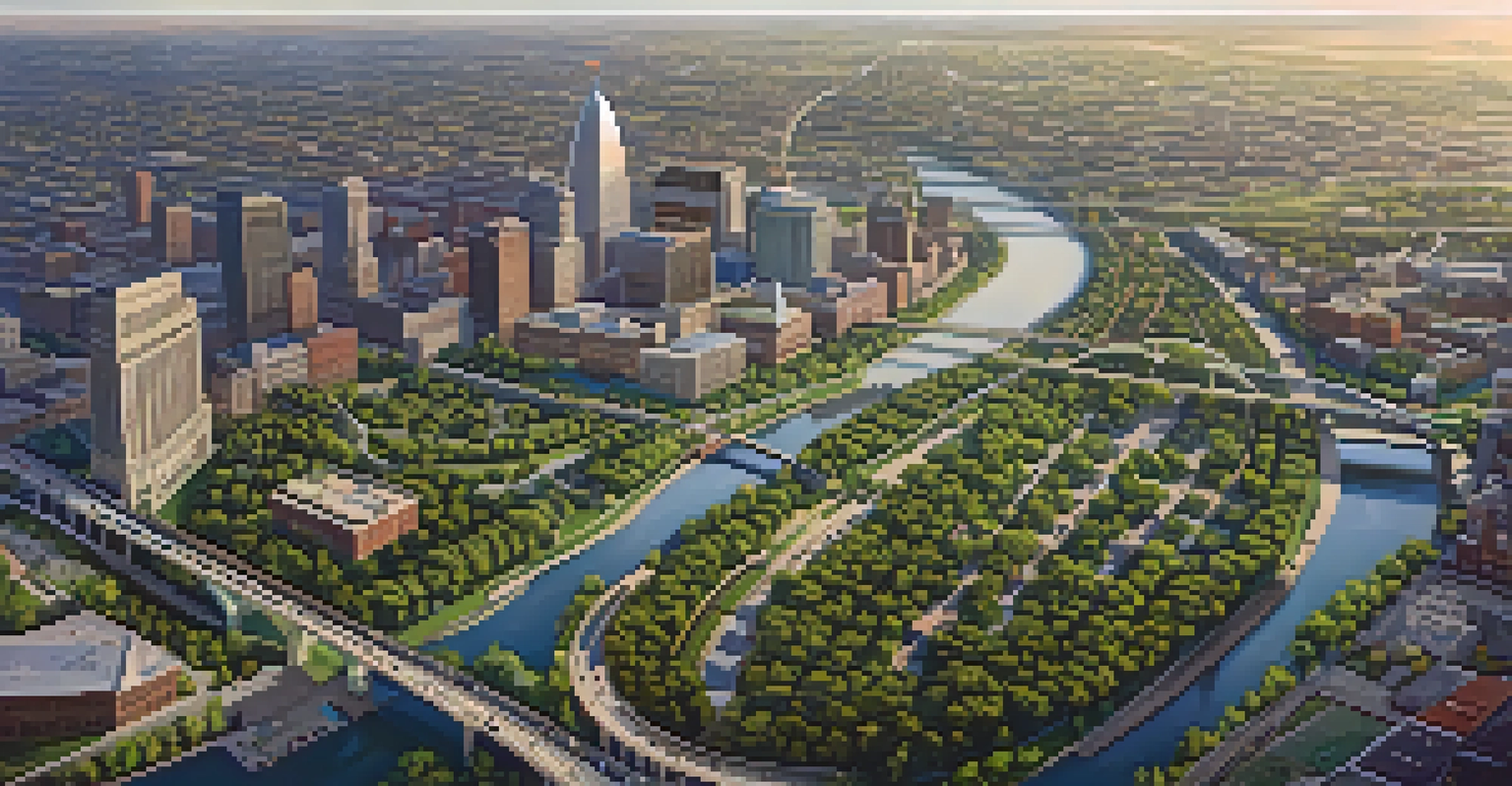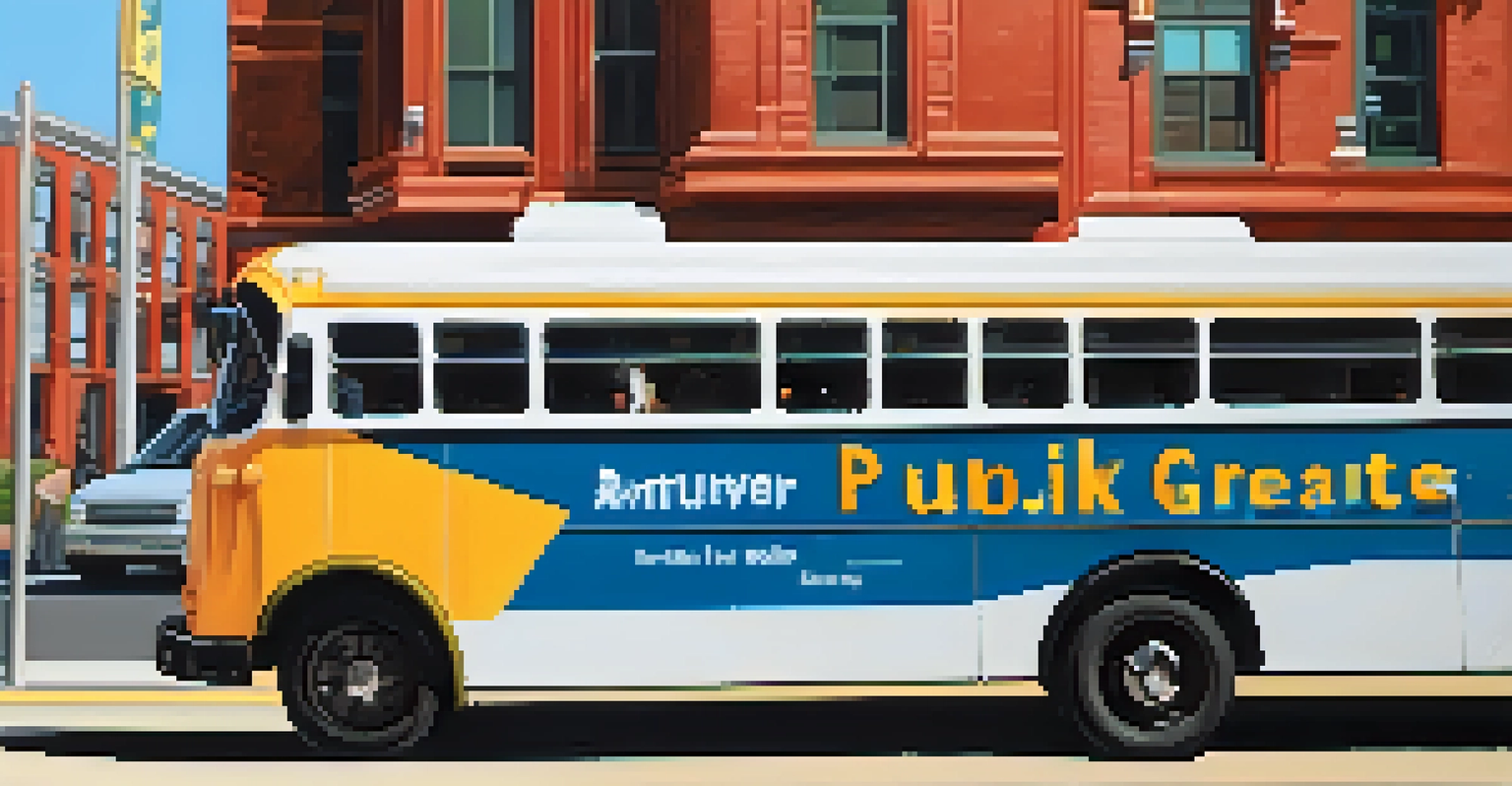Challenges Facing St. Louis Transportation Infrastructure

Aging Infrastructure: The Crumbling Backbone of St. Louis
St. Louis, like many cities across the U.S., struggles with aging infrastructure. Roads, bridges, and public transport systems are often outdated, leading to safety concerns and inefficiencies. The city’s bridges, for instance, frequently require inspections and repairs, which can disrupt traffic and pose hazards to commuters.
Infrastructure is the backbone of a successful economy and community.
The cost of maintaining and upgrading these structures can be astronomical. City budgets are often stretched thin, making it difficult to allocate funds for necessary renovations. As a result, many residents experience frustrating delays and detours due to construction work.
In addition to immediate inconveniences, this aging infrastructure can deter new businesses from setting up in St. Louis. Companies often look for cities with reliable transportation options for their employees and customers, and outdated facilities can create a perception of neglect.
Traffic Congestion: A Daily Struggle for Commuters
Traffic congestion is a significant challenge for those living in and around St. Louis. During peak hours, major highways can become bottlenecks, leaving commuters stuck in long lines of vehicles. This not only affects daily schedules but also contributes to increased air pollution.

The city's layout and urban sprawl exacerbate the issue. With more people relying on cars for transportation, the existing roadways are often insufficient to handle the volume. Public transportation options, while available, are not always convenient or reliable enough to encourage commuters to leave their cars at home.
Aging Infrastructure Needs Upgrades
St. Louis faces challenges with outdated roads and bridges, leading to safety concerns and inefficiencies.
To tackle congestion, city planners are exploring various solutions, including improving public transit routes and investing in smart traffic management systems. However, implementing these changes requires time, funding, and community support, making it a complex challenge.
Public Transportation: Accessibility and Reliability Issues
Public transportation in St. Louis, while available, often faces criticism regarding its accessibility and reliability. Many residents rely on buses and light rail to get around, but inconsistent schedules and limited routes can make commuting a hassle. This can especially impact low-income individuals who may not have access to personal vehicles.
The best way to predict the future is to create it.
For those living in suburban areas, public transport options can be even more limited. This lack of connectivity can isolate communities, making it difficult for residents to access jobs, education, and essential services. Improving public transport is vital for fostering inclusivity and ensuring that all residents can participate fully in city life.
Efforts are underway to enhance the public transportation system, including proposed expansions and improvements to existing services. However, these initiatives require substantial investment and community engagement to ensure they meet the needs of all St. Louisans.
Funding Challenges: The Financial Strain on Transport Projects
Securing funding for transportation projects in St. Louis is a persistent challenge. With limited resources, city officials often struggle to prioritize necessary upgrades and maintenance. This financial strain can lead to delays in critical projects that affect the safety and efficiency of the transportation network.
Federal and state funding programs can help, but they often come with restrictions and lengthy application processes. As a result, city leaders must get creative in their approach to financing, exploring alternative funding solutions like public-private partnerships. However, these solutions can also come with their own set of challenges and complications.
Traffic Congestion Affects Commutes
Peak hour traffic congestion is a daily struggle for commuters, exacerbated by urban sprawl and limited public transport options.
Community involvement is essential in advocating for funding. Residents can play a pivotal role by voicing their concerns and emphasizing the importance of a robust transportation system, helping to sway decision-makers towards prioritizing these projects.
Environmental Concerns: Striving for Sustainable Solutions
As St. Louis grapples with transportation challenges, environmental concerns are increasingly at the forefront. The reliance on cars contributes to air pollution and greenhouse gas emissions, which can have detrimental effects on public health. Residents are becoming more aware of the environmental impact of their transportation choices.
In response, there is a growing push for more sustainable transportation options, such as biking and walking paths, as well as electric public transport vehicles. By promoting these alternatives, St. Louis can work towards reducing its carbon footprint while enhancing the quality of life for its residents.
However, transitioning to a greener transportation system requires careful planning and community engagement. It’s vital for city planners to collaborate with residents and environmental groups to create a comprehensive strategy that addresses both transportation needs and environmental sustainability.
Technological Advancements: Opportunities for Improvement
Technology offers exciting opportunities to enhance St. Louis's transportation infrastructure. From smart traffic signals that adapt to real-time conditions to mobile apps that provide public transit updates, technology can streamline how residents navigate the city. These innovations can greatly improve the overall commuting experience.
Moreover, incorporating data analytics can help city officials better understand traffic patterns and identify areas needing improvement. For instance, analyzing peak traffic times can lead to more effective scheduling of public transportation services, ultimately making them more appealing to commuters.
Community Engagement Drives Solutions
Involving residents in transportation planning is essential for creating effective solutions that reflect the community's needs.
While investing in technology may require initial funding, the long-term benefits—such as reduced congestion and improved safety—can make it a worthwhile endeavor. Engaging with tech companies and startups can also provide valuable insights into implementing these advancements effectively.
Community Engagement: The Key to Transportation Solutions
Community engagement is crucial when addressing the challenges facing St. Louis's transportation infrastructure. Residents often have firsthand experience with the issues at hand and can provide valuable insights into what changes are needed. Involving the community in planning discussions fosters a sense of ownership and accountability.
Public forums, surveys, and social media platforms are effective ways to gather feedback and ideas from locals. When residents feel their voices are heard, they are more likely to support initiatives aimed at improving transportation. This collaborative approach can lead to solutions that truly reflect the needs of the community.

Ultimately, successful transportation infrastructure depends on a shared vision between city officials and residents. By working together, St. Louis can create a more efficient and reliable transportation system that benefits everyone.